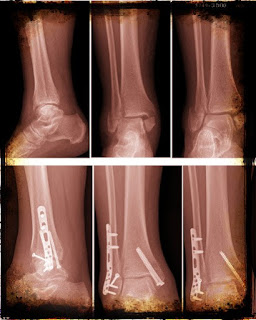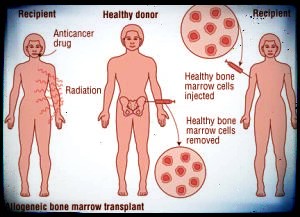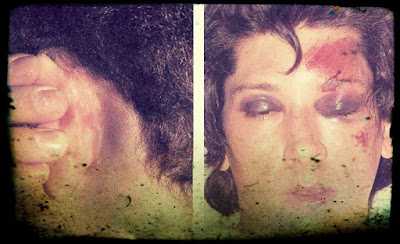How to know if your ankle is broken? How is a broken ankle treated?
Fractures of the Ankle
How do ankle fractures occur?
Ankle fractures are caused by a forceful and excessive twisting of the ankle, either in or out. The twist comes from stumbling, catching the foot in a crevice, or falling, in which the weight of the body is unevenly distributed. Many skiers suffer fractured ankles, and some of the best treatments have been evolved by surgeons practicing near ski slopes. The stress and strain factors in the ankle are so uniform that the pattern of the injury, dislocation and deformity is specific. Many varieties of ankle fractures are grouped together under the name of Pott's fracture.What shall I do, Doctor? I'm at a gas station phone and my wife just fell down and twisted her ankle.
If it is painful and she can't walk, it may be a fracture. Don't manipulate it, don't pull it. Just wrap a towel or pillow around it and take her to a hospital for an X ray. It is best if she does not walk. You can carry her in a chair.
How does an ankle sprain differ from a fracture?
Most sprains are the consequence of forced ankle turn in which the foot is rocked in or turns under. The outer ligaments of the joints are strained, stretched, or even pulled off, but the major bone fragments remain intact.What is special about ankle fractures?
There is nothing "special" about these fractures. What is important is that injuries to this area often involve three separate bones: the ends of each of the long bones of the leg (tibia and fibula) and the joint part of the foot. These fractures frequently extend directly into the joint, raising the possibility of future arthritis in the injured area or a shift in the up and down plane of the ankle joint. This is a critical factor in determining recovery or disability. Along with displacement, dislocation or bone injury, the tendons are also frequently stretched or pulled off. The severity of ankle injuries varies considerably; some require a tight bandage while a very few may prove completely nonsalvageable and require amputation. The vast majority fall in between.What determines whether you put a cast on or operate?
If the displacements and broken parts can be put together and held by a cast, this is all that will be done. These injuries are referred to as stable fractures. On the other hand, with injuries and distortions that experience has indicated cannot be managed by closed (nonoperative) methods, realignment and stabilization are effected by an open (operative) method that ordinarily manipulates the bone and joints into position and mechanically maintains it by screws and plates.The surgeon is concerned with restoring the weightbearing function of the foot. Whether the manipulation is external or by operation, the vast majority of these fractures are best manipulated under general anesthesia.










Comments
Post a Comment